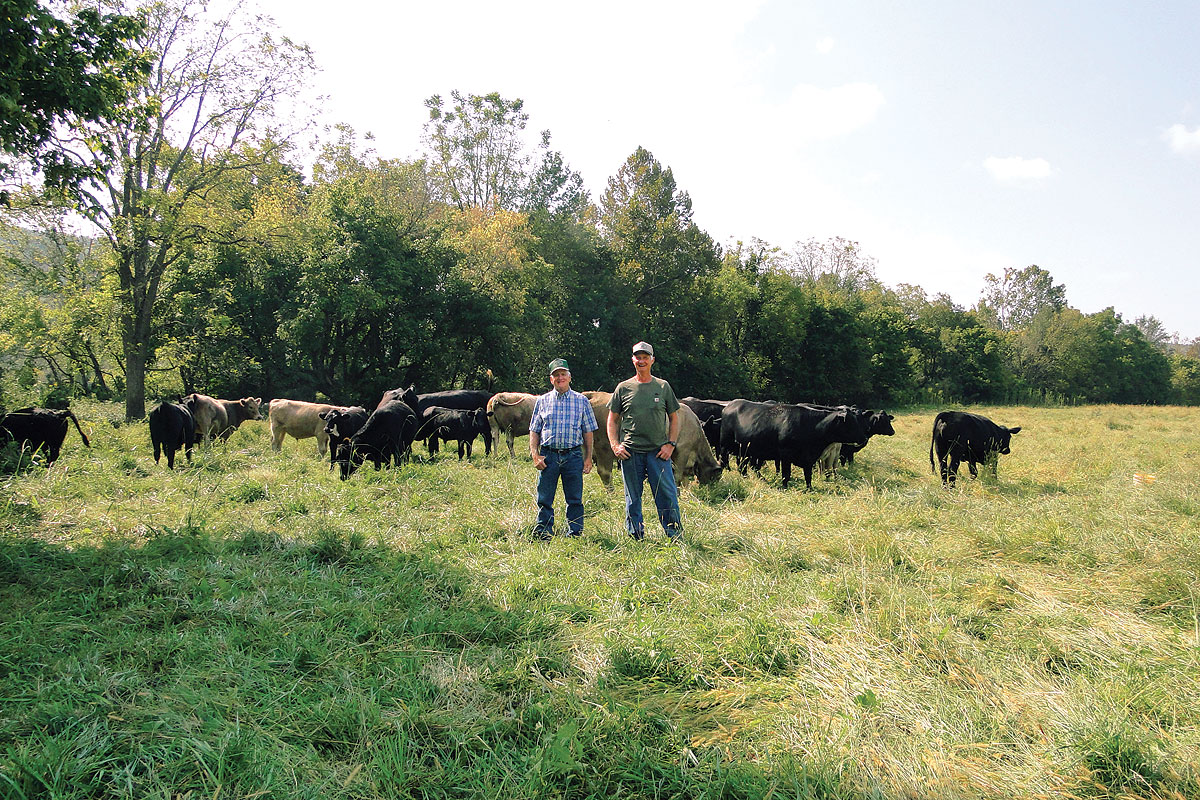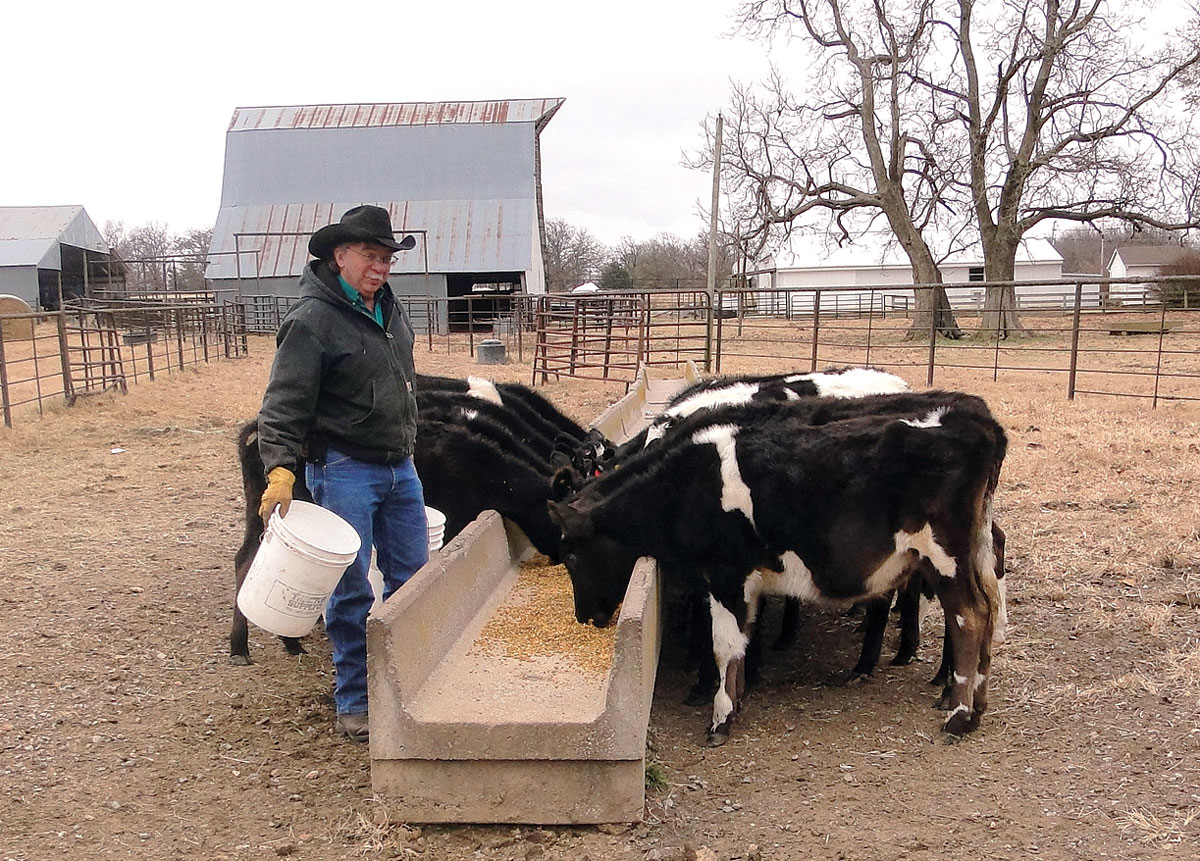
Fred and Jean Ficht, and Butch and Brenda Fancher make up Fancher Farms
Fred Ficht and Butch Fancher are both retired from the Arkansas Highway and Transportation Department were Fred worked in maintenance in Madison County, Ark., and Butch was a district bridge inspector.
While Fred’s wife Jean is also retired from elementary education, Butch’s wife Brenda is still employed as the office manager of the Huntsville Water Department. Butch and Jean are siblings, with Brenda having been raised very close by and Fred only 10 miles away.
These four people make Fancher Farms, a true family affair by combining both land and cattle in a commercial cow/calf operation in the Loy community of Huntsville, Ark. Jean and Brenda pitch in to help whenever and wherever needed with children and spouses also helping, especially during haying season. Five grandchildren add to family fun with 7-year-old Jensen showing the most interest in both cattle and equipment.
“A favorite family story concerns my grandfather Grover Fancher,” Jean said.
Grover was a really good horseman. He rode so much that his legs were bowed and fit around horses very comfortably. Consequently he was known for sleeping habit in the saddle when traveling long distances. He often traveled to Fort Douglas near Clarksville, Ark. and one day left to buy cattle there. His horse, Midnight, however, had a different idea. When Midnight stopped and Grover woke up to tell Midnight which way to go, Grover discovered he was right back where he started from.
Like all of Arkansas, the topography of the Ficht/Fancher land varies greatly but of significant importance for this operation are the presence of the Kings River and damp lowland meadows that prosper even during drought times. The disadvantage is large and numerous flies, the biggest challenge to herd management.
“These flies are really strong and persistent. I’ve sprayed a big horsefly directly on a cow for quite a bit before it would drop off. Even then, it wasn’t dead,” Fred said.
Nonetheless their protocol of combining spray, back rubbers and fly medicated mineral is very effective in preventing pinkeye as evidenced by the fact that this year they have had no cases of the troublesome disease.
The 600-acre operation contains 250 acres of pasture/hay land with the remaining land heavily timbered and occasionally harvested to a stump width of 14 inches.
“If you harvest that way and you have another fine tree in 20 years,” Fred said.
The pasture land is mostly fescue, Orchard grass and clover with some Bermuda. Fred and Butch use a liquid herbicide with a wick applicator that rubs weed tops but does not harm the grasses or the especially sensitive clover. This year the weather has been favorable for cockle burrs and ragweed, the current biggest land management issue.
“Our 54-foot boomless sprayer works well and really knocked out the ragweed for us this year,” Butch said.
The counterpart to killing weeds is fertilizing grasses. Fancher Farms has a registered program with the NRCS and uses a neighbor’s turkey litter according to soil testing results.
While some water for the cattle comes from ponds supplemented by rural water, the most important source is natural springs on the ridge which were used to provide water for three households. The family still uses the abundant fresh and clean water which is also stored in tanks for the cattle.
Fred and Butch’s combined herd consists of 105 mommas, 20 replacement heifers, market calves and four bulls purchased from other family members. The bulls are placed with the cows seasonally to avoid summer calves when flies are at their worst. While all four bulls are registered black Angus, the cows are a commercial mix. Though heavily Angus influenced, reminders of the early 1970s all Hereford herd and of two Charolais bulls used in the early 2000s are still present in both mommas and calves.
Butch and Jean’s father Jim raised the all Hereford herd.
“When the first black calf was born, the cows had never seen one and thought it was a dog so they tried to chase it away,” Butch said.
Jim’s herd genetics changed because Jim’s brother Sam thought crossing would improve production.
“Back then Hereford genetics were different than they are now,” Fred explained. “The calves were on the small side, milk production wasn’t the best and pinkeye was a problem. At that time introducing black Angus helped remedy those issues.”
Fancher farm calves are weaned at a minimum of 500 pounds and generally sold at the Green Forest, Ark., sale barn in February, July and November depending upon market conditions.
Market calves are calf hooded and bull calves emasculated. Even though bulls are changed every three years which means the herd is not closed, the herd is remarkably healthy.
“A commercial herd is different than a registered herd,” Butch explained, “For us, the process is less technical and record intensive. We do what we need to when we need to but we intervene as little as possible.”
Cow and replacement heifer culling is determined by the quality of calves.
“A cow or heifer is like a piece of equipment,” Fred said. “Why get rid of a good machine? We’ve had some cows for 15 years. On the other hand, a lemon’s got to go.”






